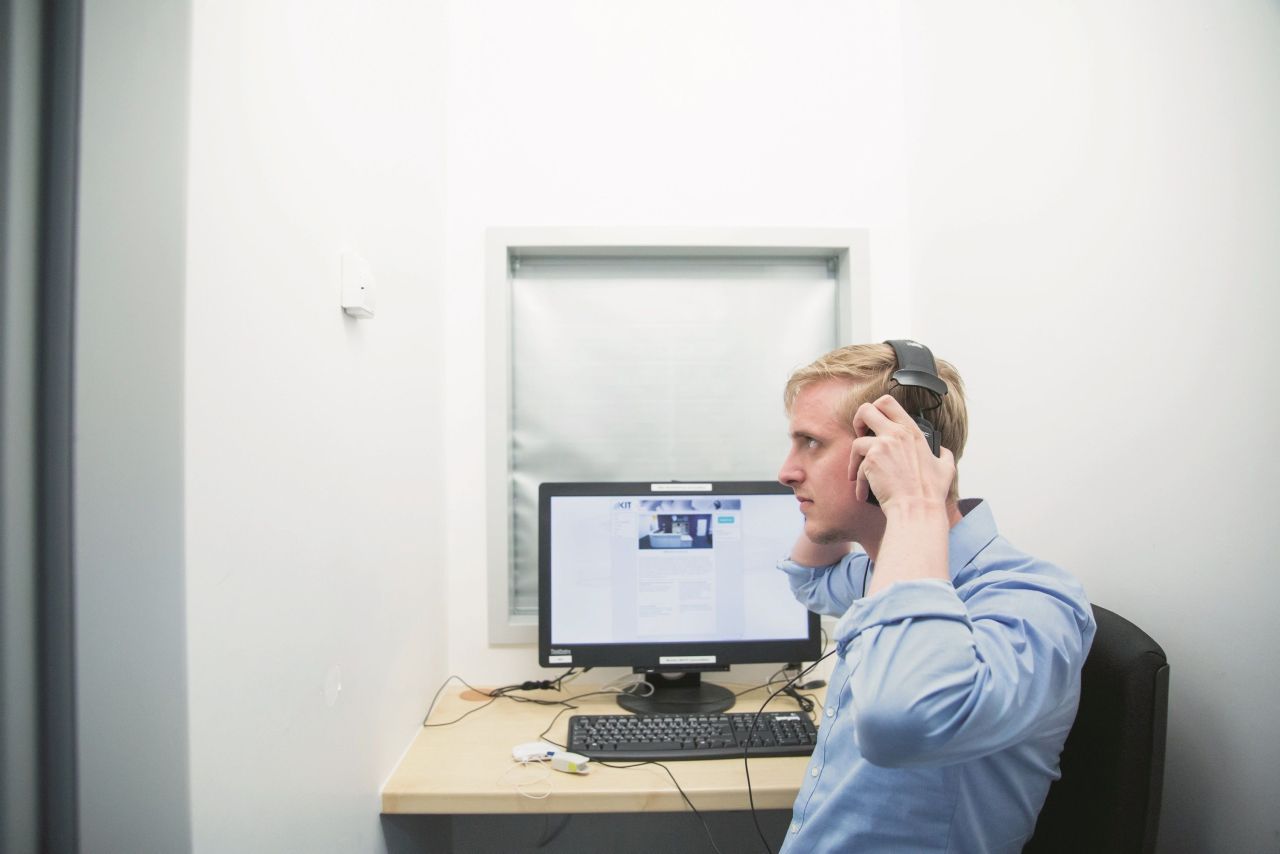Does a certain environment enhance the incentive to buy? Which role do emotions play in auctions? And which influence has the number of co-bidders? These issues are studied in computer-based experiments under laboratory conditions at the recently opened Decision and Design Lab (KD2Lab) of Karlsruhe Institute of Technology (KIT). The findings are of interest to both researchers and companies wishing to design survey tools, apps or internet pages as user-friendly as possible.
Rational estimation of the value of goods, on the one hand, a beating heart and sweaty palms, on the other – not only bidders of auctions experience excited tension in decision situations. Human decisions are made with rational and emotional processes interacting in a complex way. Factors influencing the decision behavior and the role of aspects, such as the willingness to cooperate, trust or competition, are of interest not only to psychologists and economists, but also to business information specialists optimizing human-machine interfaces to design apps or websites of companies or institutions in a user-friendly way.
To acquire and analyze the behavior of test subjects in various environments and decision situations, KIT’s KD2Lab accommodates two technically and spatially separated laboratory areas and 40 soundproof and air-conditioned test cabins, two of which are suited for wheelchair users. In addition, two large team rooms are available for group experiments. The KD2Lab, hence, is one of the biggest computer-based experimental laboratories in the world. Its construction costs amounted to EUR 1.6 million.
“At the laboratory, many factors can be kept constant and only one or a few aspects can be changed to allocate differences in the behavior of test subjects to the influence of certain factors,” Jella Pfeiffer explains. The business information specialist of the Institute of Information Systems and Marketing (IISM) is member of the team managing the KD2Lab. Twelve chairs of KIT are involved in the studies performed there. Researchers of various disciplines, such as psychologists, sports scientists, economists, engineers, and computer scientists cooperate closely. “In the 40 computerized cabins, experiments can be carried out with up to 240 test persons a day. Only very few laboratories have such a big capacity,” Pfeiffer says. Air conditioning ensures that all test subjects have the same constant climatic conditions. Adjustable acoustic insulation prevents the test subject from hearing the computer keyboard or the clicking of the mouse of another test person and from being influenced by the other person’s activity during bidding. The spectrum of experiments ranges from the effect of time pressure on bidders to group dynamics in strategic situations to the reaction of test subjects to immersion into interactive virtual-reality worlds.
The laboratory is equipped with latest physiological diagnostics systems to measure muscle activities of the test subjects, the activity of their brains, and the rate of their heartbeat. By measuring electrical conductivity of the skin, unconscious reactions can be determined. An eye-tracking system records the way how the participants perceive their surroundings. “The KD2Lab has a pool of 2400 registered test persons, most of them are students of KIT,” Pfeiffer says.
The laboratory is used mainly by researchers of KIT for fundamental research and close-to-application studies. In addition, it is booked by external partners from science and industry, including universities, research institutions, market research institutions, and authorities to test e.g. the user friendliness of digital services. “We offer researchers an extensive modern infrastructure for interdisciplinary economic, neuro- and psycho-physiological experiments,” Christof Weinhardt, spokesperson of the KD2Lab, says.
The KD2Lab was funded by the German Research Foundation (DFG).
Being “The Research University in the Helmholtz Association”, KIT creates and imparts knowledge for the society and the environment. It is the objective to make significant contributions to the global challenges in the fields of energy, mobility, and information. For this, about 10,000 employees cooperate in a broad range of disciplines in natural sciences, engineering sciences, economics, and the humanities and social sciences. KIT prepares its 22,800 students for responsible tasks in society, industry, and science by offering research-based study programs. Innovation efforts at KIT build a bridge between important scientific findings and their application for the benefit of society, economic prosperity, and the preservation of our natural basis of life. KIT is one of the German universities of excellence.

